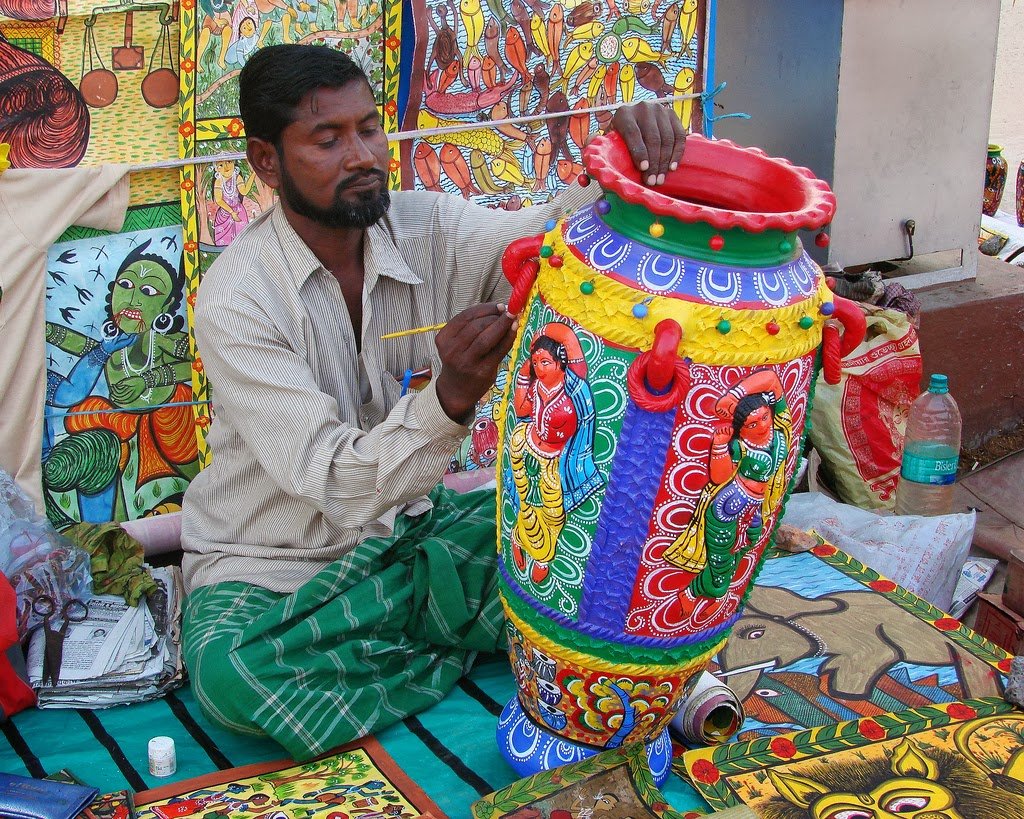The schools in Ras Al Khaimah (RAK) have embarked on an exciting initiative aimed at reviving traditional handicrafts by incorporating them into the weekly curriculum. This new program has already begun in schools across the emirate, sparking interest among students in age-old skills like palm weaving, pottery, and other crafts that once defined the cultural fabric of the UAE.
In a world where digital technology is increasingly taking over, this step to teach traditional crafts is seen as a way to preserve heritage and pass down important cultural knowledge to the next generation. These lessons offer students a chance to connect with their roots while learning skills that were once vital to daily life in the UAE.
Bringing Heritage to Life
One of the most prominent aspects of this initiative is the focus on palm weaving. For centuries, palm trees were a staple of life in the UAE, and their leaves were used to create everything from baskets to mats and even roofs for homes. By teaching students how to weave these leaves, schools are not just passing on a skill but also fostering a deeper understanding of the UAE’s past. Palm weaving, which is delicate and intricate, requires patience and a steady hand—skills that many students find rewarding and fulfilling once mastered.

Similarly, pottery is being reintroduced as part of the curriculum, teaching students how to create items that were once essential to daily life. Pottery has a rich history in the UAE, where it was used for storing food, water, and other essential goods. By working with clay, students learn the techniques of shaping and firing the material, while also appreciating its role in the region’s cultural history.
These hands-on experiences help students gain an appreciation for their heritage in a way that textbooks and digital media often cannot.

Bridging the Gap Between Tradition and Modernity

While technology continues to play a key role in modern education, many educators in RAK believe that teaching traditional crafts offers a unique form of learning. Students gain practical skills and can see firsthand how these crafts played a significant part in the lives of their ancestors. The program also serves as an opportunity to introduce children to the importance of sustainability and environmental awareness. Palm leaves and clay are natural resources, and working with them allows students to connect with the concept of using available materials creatively and efficiently.
Moreover, as the world becomes more industrialized, there is growing interest in handmade and locally sourced goods. As part of this initiative, students in RAK are being taught how to appreciate the value of crafts and even think about how these traditional practices might have a place in today’s world.
The introduction of traditional handicrafts into schools also fosters a sense of pride in local culture. Young people, who are often more exposed to international trends, now have the chance to see the beauty in their own cultural heritage. The lessons are not just about craft-making but also about identity and community.
Crafting a Future for Local Artisans
There is a bigger picture behind the effort to teach traditional handicrafts. It is not only about reviving these skills but also about creating future artisans and entrepreneurs. With the proper guidance, students who develop a passion for these crafts could go on to pursue careers in areas such as design, craft production, or even tourism. The UAE’s growing interest in heritage and culture has opened up avenues for local artisans to create a niche for themselves in the broader economy.
Some schools have already taken steps to integrate these crafts into school events, exhibitions, and even local markets. This not only showcases the students’ work but also gives them the confidence to share their creations with a wider audience. Events like these are encouraging young students to take pride in their cultural identity and see how their skills might be used in the real world.
In the long term, this program could contribute to the revival of a local artisan economy, one that values handmade products and cultural authenticity. By nurturing these skills, schools in RAK are ensuring that the next generation not only learns about their heritage but also feels inspired to carry it forward in creative and meaningful ways.
Creating a Sense of Community

Teaching traditional handicrafts also provides a sense of community both within the school and beyond. Students and teachers alike are coming together to preserve the past, while families and local communities are being invited to participate in the process. Craft workshops and exhibitions are regularly organized to allow families to witness the skills being passed down from one generation to the next.
Such events help to foster a deeper connection between schools and their communities. It reminds the younger generation that their cultural history is something they share with those who came before them and that they have a responsibility to keep those traditions alive.
This is especially important as the UAE continues to grow and develop. In the rush to modernize and embrace global progress, it’s easy for local traditions and cultural practices to be overlooked. By making sure that students are learning these skills early on, schools are helping to keep the spirit of tradition alive, ensuring that it is not lost in the face of change.
The Positive Impact on Student Development
The benefits of this initiative extend beyond just cultural knowledge. The practice of creating handicrafts helps students develop a range of skills, from fine motor abilities to problem-solving and teamwork. Crafting requires focus and attention to detail, skills that are essential for academic success. Furthermore, working with their hands has been shown to reduce stress and promote mindfulness among students, offering a break from the pressures of academic studies.
In a time when students are often consumed with digital screens and academic stress, taking time to create something by hand allows for mental relaxation and creativity. The process of making something tangible with their hands gives students a sense of accomplishment and boosts their self-esteem.
Looking to the Future
With the success of the initial phases of this program, educators in RAK are hopeful that it will expand to more schools in the coming years. In the future, it could be integrated into other subjects like art, history, and even science, where the traditional methods can be compared to modern techniques. There is also potential for local artisans to play a role in teaching these crafts, further bridging the gap between education and the community.
By bringing these traditional crafts back into the schools, RAK is doing more than preserving cultural knowledge—it is fostering a sense of pride, creativity, and connection to the past among its youth. This initiative not only helps students understand their roots but also prepares them to use their heritage to shape a brighter future.
Also read: Dubai Welcomes First Crypto-Friendly Residential Tower














